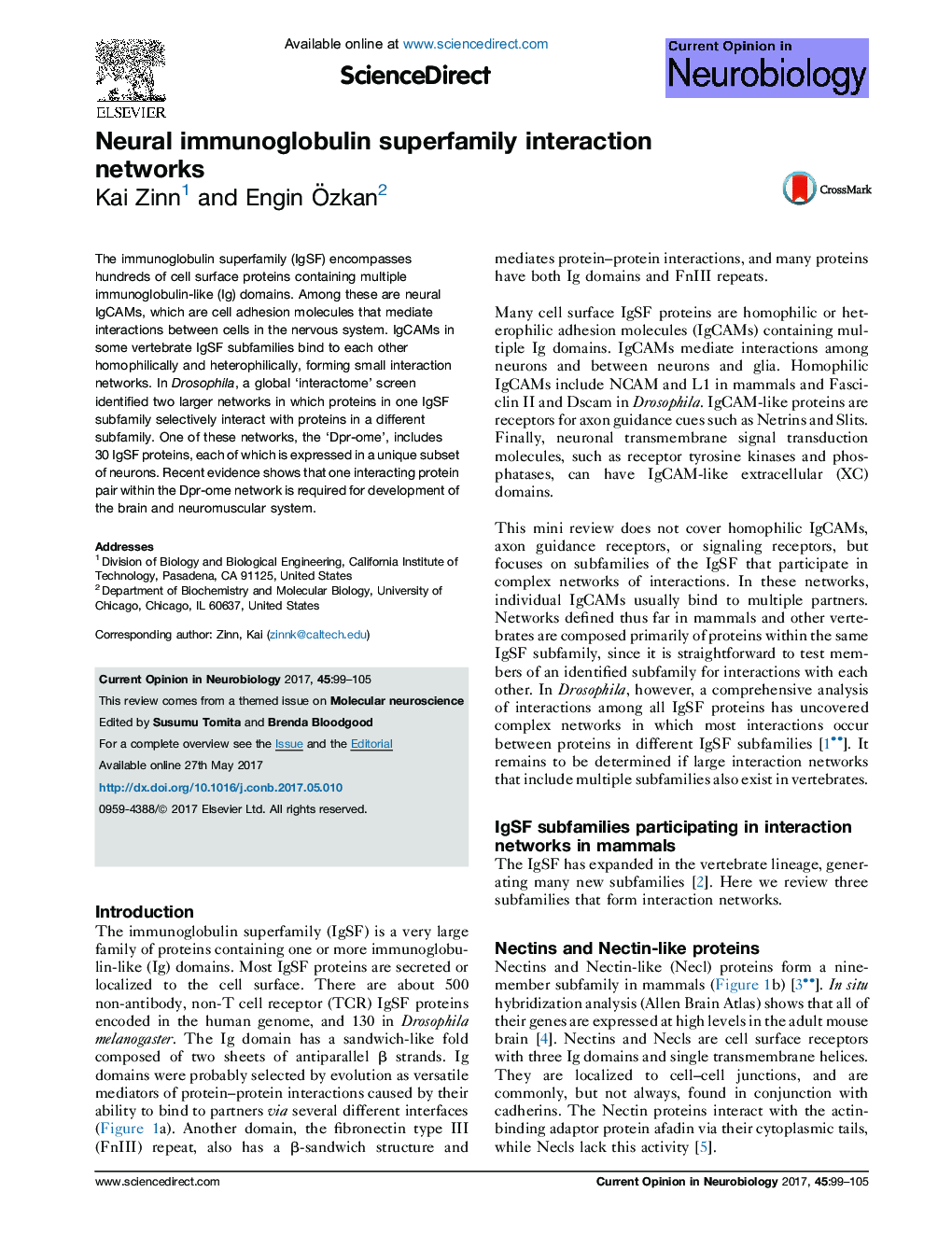| Article ID | Journal | Published Year | Pages | File Type |
|---|---|---|---|---|
| 5737048 | Current Opinion in Neurobiology | 2017 | 7 Pages |
â¢Mammalian IgSF subfamilies define small interaction networks.â¢A global Drosophila IgSF interaction map identifies complex binding networks.â¢Large networks with functions in neural development span subfamily boundaries.â¢Binding partners in the Dpr-ome network label synaptically connected neurons.
The immunoglobulin superfamily (IgSF) encompasses hundreds of cell surface proteins containing multiple immunoglobulin-like (Ig) domains. Among these are neural IgCAMs, which are cell adhesion molecules that mediate interactions between cells in the nervous system. IgCAMs in some vertebrate IgSF subfamilies bind to each other homophilically and heterophilically, forming small interaction networks. In Drosophila, a global 'interactome' screen identified two larger networks in which proteins in one IgSF subfamily selectively interact with proteins in a different subfamily. One of these networks, the 'Dpr-ome', includes 30 IgSF proteins, each of which is expressed in a unique subset of neurons. Recent evidence shows that one interacting protein pair within the Dpr-ome network is required for development of the brain and neuromuscular system.
